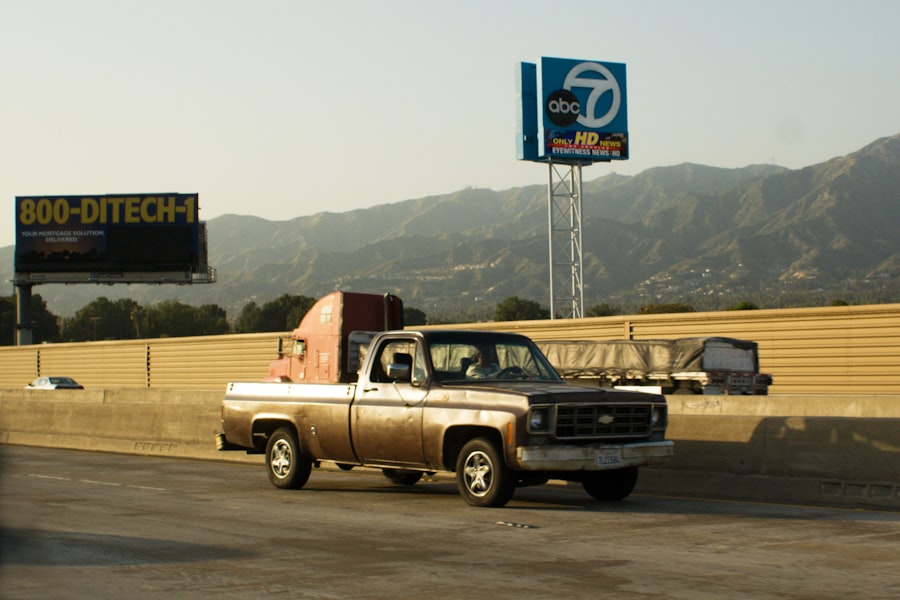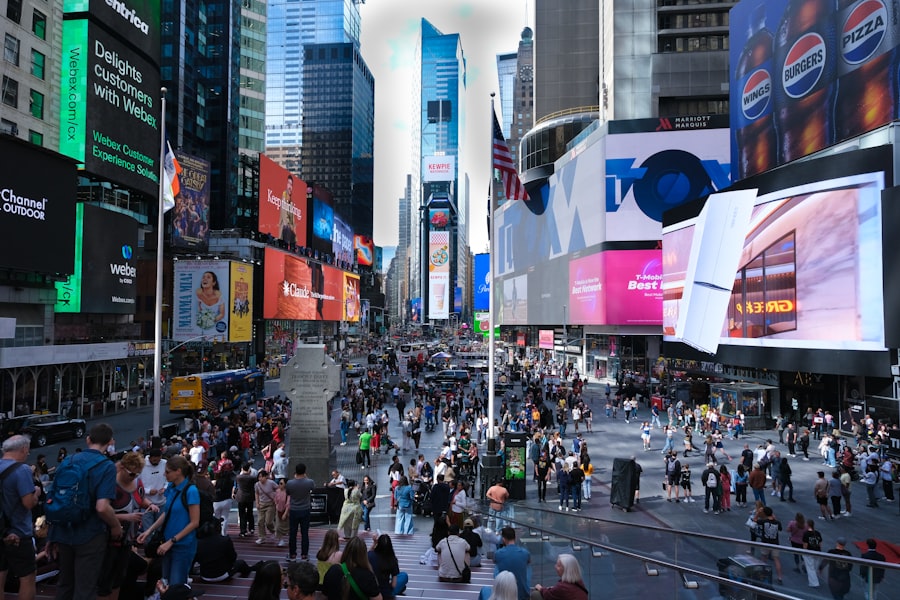Car billboard advertising, often referred to as mobile advertising, is a dynamic form of outdoor advertising that utilizes vehicles as moving billboards. This innovative approach allows businesses to promote their products or services by placing large, eye-catching advertisements on cars, trucks, or vans. Unlike traditional static billboards, car billboards travel through various neighborhoods and urban areas, reaching a diverse audience in real-time.
The concept capitalizes on the mobility of vehicles, transforming them into mobile marketing platforms that can engage potential customers wherever they go. The effectiveness of car billboard advertising lies in its ability to capture attention in a way that stationary ads cannot. As vehicles navigate through traffic, they become part of the landscape, drawing the eyes of pedestrians and drivers alike.
This form of advertising is particularly advantageous in densely populated urban environments where traditional billboards may be limited by space or visibility. By leveraging the movement of vehicles, businesses can ensure that their message is seen by a broad audience, making it a compelling option for brands looking to enhance their visibility and reach.
Key Takeaways
- Car billboard advertising is a form of outdoor advertising that involves placing advertisements on the exterior of vehicles.
- The benefits of car billboard advertising include high visibility, extended reach, and the ability to target specific demographics.
- To design an effective car billboard, it’s important to keep the message simple, use bold and eye-catching visuals, and include a clear call to action.
- Choosing the right vehicles for car billboard advertising involves considering the target audience, the vehicle’s route and location, and the size and type of the vehicle.
- Finding the best locations for car billboard advertising involves identifying high-traffic areas, popular events, and areas with high visibility to the target audience.
- The cost and ROI of car billboard advertising can vary depending on factors such as the size of the campaign, the type of vehicles used, and the duration of the campaign.
- Tips for successful car billboard advertising campaigns include conducting thorough research, testing different designs and messages, and tracking the campaign’s performance.
- Case studies of successful car billboard advertising campaigns can provide valuable insights and inspiration for creating effective campaigns.
Benefits of Car Billboard Advertising
One of the primary benefits of car billboard advertising is its extensive reach. Vehicles equipped with advertisements can cover vast distances, allowing brands to penetrate multiple markets within a short period. This mobility means that a single advertisement can be seen by thousands of potential customers daily, significantly increasing brand exposure.
Moreover, the ability to target specific geographic areas enables businesses to tailor their campaigns to reach particular demographics or neighborhoods, enhancing the relevance of their messaging. Another significant advantage is the cost-effectiveness of car billboard advertising compared to traditional billboard placements. While static billboards often require substantial rental fees and long-term contracts, car advertising typically involves lower upfront costs and flexible terms.
Businesses can choose to run campaigns for specific durations or even on a pay-per-mile basis, making it an attractive option for companies with varying budgets. Additionally, the return on investment (ROI) for car billboard advertising can be substantial, as the high visibility and mobility often lead to increased brand recognition and customer engagement.
How to Design an Effective Car Billboard

Designing an effective car billboard requires careful consideration of several key elements. First and foremost, clarity is essential. The message should be concise and easily readable from a distance, as potential customers will only have a few seconds to absorb the information while driving or walking by.
Utilizing bold fonts and high-contrast colors can enhance visibility and ensure that the advertisement stands out against the backdrop of the vehicle and its surroundings. Imagery plays a crucial role in capturing attention as well. High-quality graphics that resonate with the target audience can create an emotional connection and encourage engagement.
For instance, a food delivery service might use mouth-watering images of their dishes to entice viewers. Additionally, incorporating a clear call-to-action (CTA) is vital; whether it’s directing viewers to visit a website, call a phone number, or follow social media accounts, a strong CTA can drive immediate responses from potential customers.
Choosing the Right Vehicles for Car Billboard Advertising
| Vehicle Type | Cost | Visibility | Target Audience |
|---|---|---|---|
| Compact Cars | Low | High | Urban areas |
| SUVs | Medium | High | Suburban areas |
| Trucks | High | High | Rural areas |
Selecting the appropriate vehicles for car billboard advertising is critical to maximizing the campaign’s effectiveness. Different types of vehicles serve different purposes; for example, larger vehicles like buses or vans can accommodate more extensive advertisements and are often more visible in traffic. Conversely, smaller cars may be more suitable for targeted campaigns in specific neighborhoods or events where foot traffic is high.
Moreover, the choice of vehicle should align with the brand’s image and target audience. A luxury brand may opt for high-end vehicles to convey sophistication and exclusivity, while a family-oriented product might choose minivans or SUVs that resonate with parents. Additionally, considering the vehicle’s route and frequency of travel can enhance exposure; vehicles that regularly traverse busy areas or popular events will likely yield better results than those that remain in less-trafficked regions.
Finding the Best Locations for Car Billboard Advertising
Identifying optimal locations for car billboard advertising is essential for maximizing visibility and engagement. High-traffic areas such as downtown districts, shopping centers, and major highways are prime spots where advertisements can reach a large audience. Conducting thorough research on traffic patterns and peak hours can help advertisers determine when and where their vehicles should operate for maximum impact.
Furthermore, understanding the demographics of specific locations can inform strategic decisions about where to deploy vehicles. For instance, if a brand targets young professionals, placing advertisements in areas with a high concentration of offices or co-working spaces may yield better results. Similarly, if targeting families, positioning vehicles near schools or family-friendly attractions can enhance relevance and engagement with the intended audience.
Cost and ROI of Car Billboard Advertising

The cost structure of car billboard advertising varies widely based on several factors, including vehicle type, campaign duration, and geographic location. Generally speaking, businesses can expect lower costs compared to traditional billboard advertising due to reduced overhead expenses associated with vehicle maintenance and operation. Many companies offer flexible pricing models that allow advertisers to choose between flat rates or pay-per-mile options, making it easier for businesses to manage their budgets effectively.
Calculating the return on investment (ROI) for car billboard advertising involves assessing both direct and indirect benefits. Direct benefits may include increased sales or inquiries generated from the campaign, while indirect benefits could encompass enhanced brand awareness and customer loyalty over time. Tracking metrics such as website traffic spikes or social media engagement during the campaign period can provide valuable insights into its effectiveness.
Ultimately, successful campaigns often demonstrate a favorable ROI due to their ability to reach diverse audiences in various locations.
Tips for Successful Car Billboard Advertising Campaigns
To ensure the success of car billboard advertising campaigns, several best practices should be followed. First, consistency in branding is crucial; advertisements should align with existing marketing materials to create a cohesive brand image across all platforms. This includes using consistent colors, logos, and messaging that resonate with the target audience.
Additionally, monitoring performance throughout the campaign is essential for making necessary adjustments. Utilizing tracking tools such as QR codes or unique URLs can help gauge customer engagement and response rates effectively. Regularly assessing which locations yield the best results allows advertisers to optimize their strategies in real-time, ensuring that resources are allocated efficiently.
Case Studies of Successful Car Billboard Advertising Campaigns
Several brands have successfully leveraged car billboard advertising to achieve remarkable results. One notable example is Coca-Cola’s “Share a Coke” campaign, which involved wrapping delivery trucks with vibrant graphics featuring popular names on Coke bottles. As these trucks traveled through urban areas, they not only promoted the product but also encouraged social media engagement as customers shared photos with their personalized bottles online.
Another successful case is that of local businesses utilizing car advertising during community events. A small bakery in a suburban area wrapped its delivery van with images of its signature pastries and promotional offers during a local fair. The van became a focal point at the event, drawing attention from attendees who later visited the bakery based on their memorable encounter with the advertisement.
These case studies illustrate how car billboard advertising can effectively engage audiences through creativity and strategic placement while reinforcing brand identity in diverse environments. By analyzing successful campaigns like these, businesses can glean valuable insights into crafting their own impactful car advertising strategies that resonate with their target markets.



